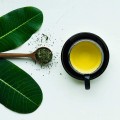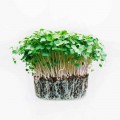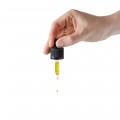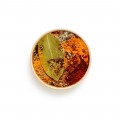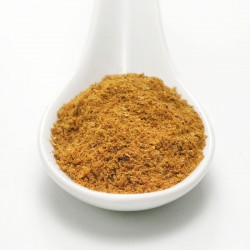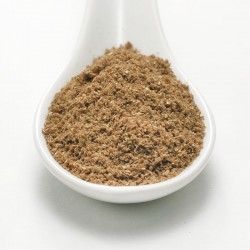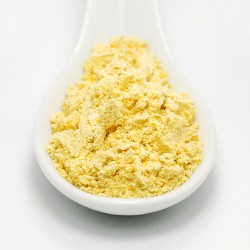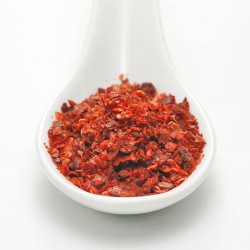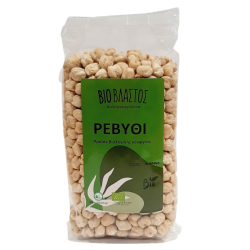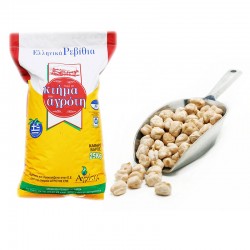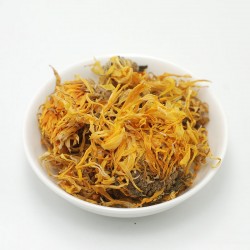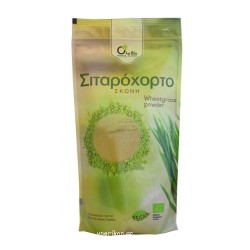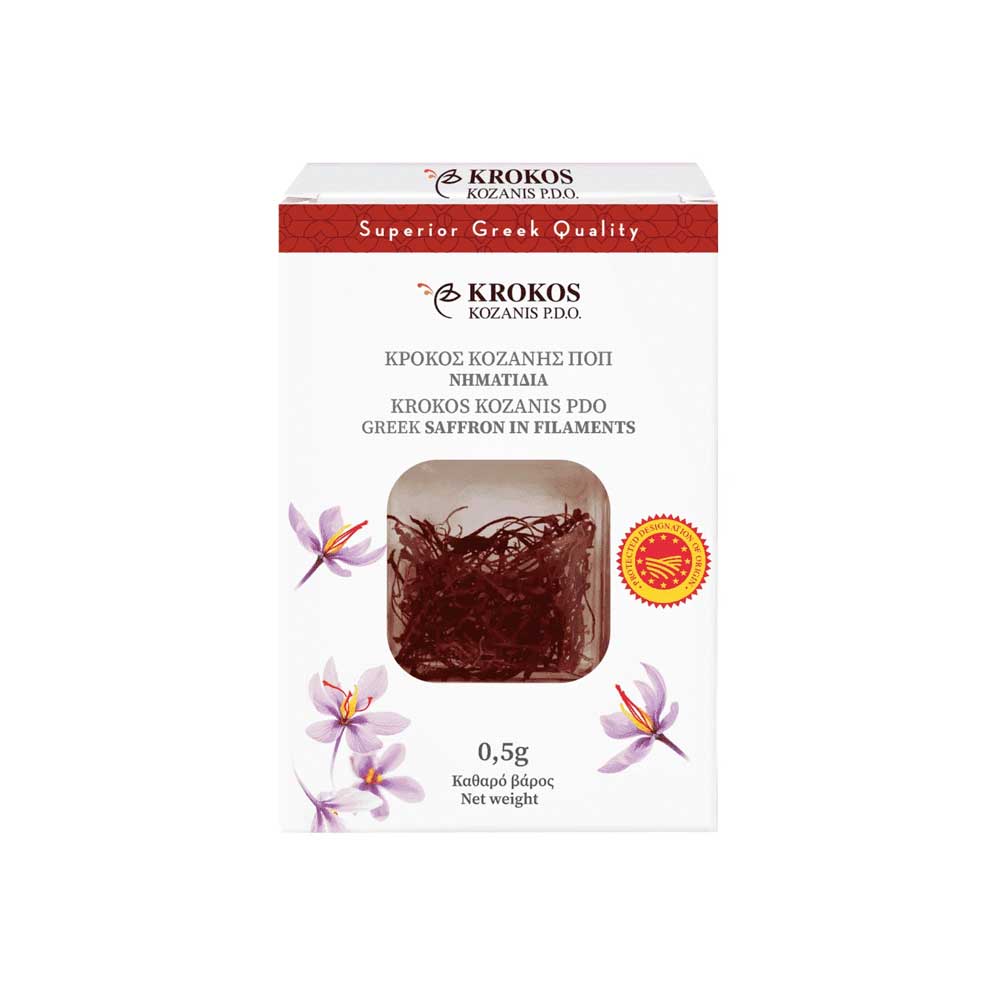



- Stock: In Stock
- Model: SUP-0142
Kozani Saffron 0.5g. filaments (Crocus sativa), Safran
Other names: saffron, zafora, sofrana, safrani, safra
The history of Saffron goes back many thousands of years. In caves in present-day Iraq, archaeologists have discovered that cave dwellers used the strong orange color of the Saffron stigma as an ingredient in their dye. However , the earliest known images of the Crocus sativus plant, the saffron flower, have been found on clay pots in Minoan palaces. The oldest known image is on a pot made around 2000-1800 BC, which is 3800 to 4000 years ago.
Saffron, or saffron, is the most expensive spice in the world—a kilogram can cost up to $10,000. The reason for its high price is the labor-intensive harvesting method, which makes production expensive. Saffron is hand-picked from the Crocus sativus flower, commonly known as the “saffron crocus.” The term “saffron” refers to the thread-like structures or stigma of the flower. It originated in Greece, where it was prized for its medicinal properties. People ate saffron to boost libido, boost mood, and improve memory.
Basic Properties: aromatic, coloring, anti-inflammatory, emmenagogue, antioxidant-anticancer, antiepileptic, antispasmodic, brings euphoria, digestive stimulant, blood circulation stimulant
Therapeutic use: Used for inflammation and oral problems, menstrual pain, headache, asthma, tonicity, stomach problems, depression, epilepsy. Traditionally considered the herb of "joy".
Culinary use: It is used to flavor and color rice dishes, seafood, soups, pasta, desserts and sweets.
Why is Saffron important for our health?
Below you will read the impressive benefits of Crocus.
- It is a powerful antioxidant.
Saffron contains an impressive variety of plant compounds that act as antioxidants - molecules that protect your cells from free radicals and oxidative stress. Notable antioxidants in saffron include crocin, crocetin, safranal, and kaempferol. - It can help improve your mood and treat symptoms of depression.
Crocus is nicknamed the “sunny spice.” This is not only because of its distinctive color, but also because it can help brighten your mood. - It acts as an aphrodisiac.
Studies have shown that saffron may have aphrodisiac properties — especially in people taking antidepressants. - May improve vision in adults with age-related macular degeneration (AMD)
Saffron appears to improve vision in adults with AMD and protect against free radical damage associated with AMD. Crocin protects photoreceptors from light-induced death. Crocetin increases oxygen availability to cells. - May improve memory in adults with Alzheimer's disease
Saffron's antioxidant properties may improve cognitive function in adults with Alzheimer's disease - May have cancer-fighting properties
Saffron is rich in antioxidants, which help neutralize harmful free radicals. Free radical damage has been linked to chronic diseases, such as cancer. - May reduce symptoms of premenstrual syndrome
Premenstrual syndrome is a term that describes physical, emotional, and psychological symptoms that occur before the onset of menstruation. Studies show that saffron may help treat the symptoms of premenstrual syndrome. - It can reduce appetite and aid in weight loss.
Snacking is a common habit that when done frequently can put you at risk for unwanted weight gain. According to research, saffron may help prevent snacking by regulating your appetite. - May reduce heart disease risk factors
Animal and test-tube studies show that the antioxidant properties of saffron may reduce blood cholesterol and prevent blood vessels and arteries from clogging. - It may lower blood sugar levels
Saffron may lower blood sugar levels and increase insulin sensitivity — as shown in test-tube and animal studies with diabetes.
How is it used:
It is of course the most expensive spice but also the most productive. A little powder or threads (2-3 threads) of saffron/crocus on the tip of a spoon is enough to color our dishes.
Make a decoction for headaches or respiratory problems. One can put a pinch of saffron threads in 100 g. of pure alcohol in a closed glass container for 14 days and with a dropper put 10-20 drops on the tongue to improve one's mood.
A dosage of 30 mg daily in 2 divided doses ( of 15 mg) has been investigated as effective for the treatment of mild to moderate depression , premenstrual syndrome, erectile dysfunction, and libido in women.
Special precautions:
Excessive consumption of saffron has an addictive effect. In the first stage it manifests itself with excessive laughter and then with tachycardia that can lead to paralysis.
The lethal dose of saffron is 10 grams! Dioscorides wrote that saffron transports people into a state of euphoria "simply if they drank 5 grams with their wine".
For therapeutic use, specialist advice is necessary. The use of saffron is not recommended during pregnancy or breastfeeding.
Indicative bibliography
- Vitamin E, Turmeric and Saffron in Treatment of Alzheimer's Disease
- Saffron (Crocus sativus L.) in Ocular Diseases: A Narrative Review of the Existing Evidence from Clinical Studies
- Short-term Outcomes of Saffron Supplementation in Patients with Age-related Macular Degeneration:
- A longitudinal follow-up study of saffron supplementation in early age-related macular degeneration: sustained benefits to central retinal function
- The effects of Crocus sativus (saffron) and its constituents on the nervous system: A review
- Saffron and crocin improved appetite, dietary intakes and body composition in patients with coronary artery disease
- Saffron (Crocus sativus L.) and major depressive disorder: a meta-analysis of randomized clinical trials
- Hydro-alcoholic extract of Crocus sativus L. versus fluoxetine in the treatment of mild to moderate depression: a double-blind, randomized pilot trial
- Crocus sativus L. (petal) in the treatment of mild-to-moderate depression: a double-blind, randomized and placebo-controlled trial
- Crocin from Crocus sativus possesses significant anti-proliferation effects on human colorectal cancer cells
- Anticarcinogenic effect of saffron (Crocus sativus L.) and its ingredients
- Epidemiology of Premenstrual Syndrome (PMS)-A Systematic Review and Meta-Analysis Study
- Effect of saffron on fluoxetine-induced sexual impairment in men
- Saffron for treatment of fluoxetine-induced sexual dysfunction in women: randomized double-blind placebo-controlled study
